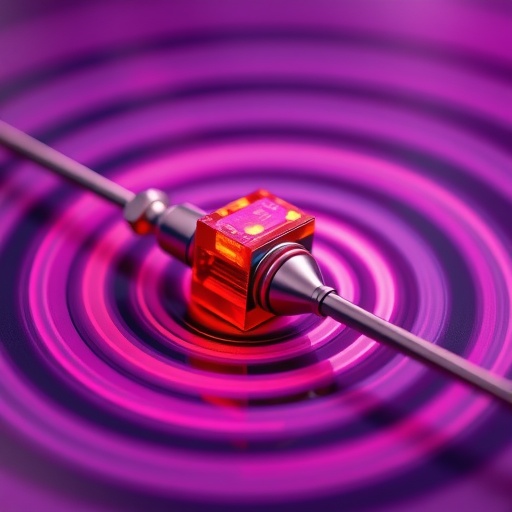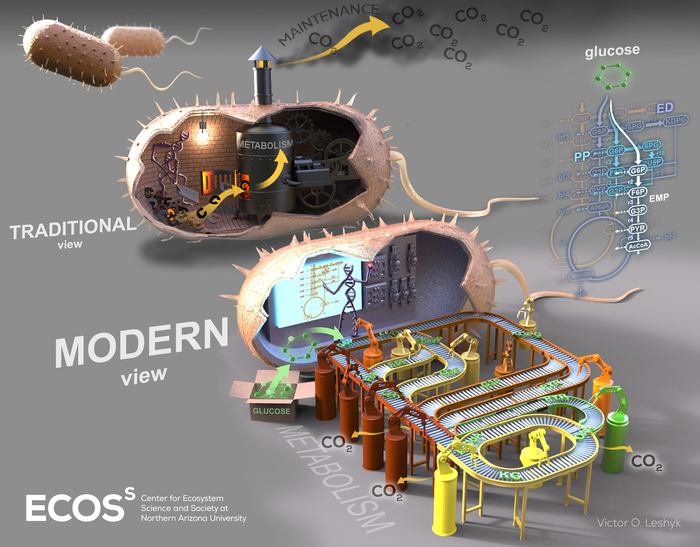In a breakthrough that promises to redefine the future of electromagnetic imaging, scientists have leveraged atomic magnetometers to propel electromagnetic induction imaging (EMI) into an unprecedented era of sensitivity and application breadth. Traditionally, EMI—a technique honed over decades—has been pivotal in non-destructive evaluation of metallic structures and the detection of concealed metallic objects. Nevertheless, its conventional sensing apparatus, reliant on induction coils, has long suffered from fundamental sensitivity limitations at low frequencies, thereby constraining its utility in scenarios demanding either deep penetration or supra-sensitive detection, such as through-barrier imaging and biomedical diagnostics.
The genesis of this transformative shift can be traced to 2014, when researchers demonstrated, for the first time, the marriage of atomic magnetometers (AMs) with EMI—forming what is now known as EMI-AM. Unlike induction coils, atomic magnetometers exploit quantum properties of atoms to measure magnetic fields with exceptional precision, offering sensitivities several orders of magnitude better, especially at low frequencies. This capability untethers EMI from its previous restrictions, enabling detailed imaging through conductive barriers and biological tissues, which were previously considered prohibitively challenging.
At its core, electromagnetic induction imaging operates by generating time-varying magnetic fields that induce eddy currents within conductive samples. These currents, in turn, produce secondary magnetic fields containing spatial information about the object’s electrical properties and geometry. Standard EMI systems detect these secondary fields via sensing coils, whose sensitivity wanes at low operation frequencies due to reduced induced voltage and increased noise. This fundamentally limits the resolution and penetration depth of standard EMI, particularly when imaging non-metallic or thin conductive structures where signal strength is minimal.
The integration of atomic magnetometers into EMI circumvents these limitations by directly detecting magnetic fields without relying on Faraday induction. Atomic magnetometers utilize alkali vapor cells subjected to optical pumping and probing, where the spin precession of atoms—modulated by ambient magnetic fields—is measured with extreme accuracy. This quantum-based detection method achieves magnetic sensitivities in the femtotesla regime at frequencies below 1 kHz, amplifying the potential for applications that require probing beneath layers of shielding or within delicate biological environments.
One of the landmark demonstrations of EMI-AM involved imaging geometrical shapes made from aluminum—a square, a triangle, and a disk—where amplitude and phase maps produced by the atomic magnetometer vividly illustrated the technique’s spatial resolution capabilities. These preliminary images heralded a new class of imaging where subtle contrasts in conductivity could be distinguished non-invasively and without ionizing radiation, a critical advantage for medical and security applications alike.
In medical imaging, the promise of EMI-AM is profound. Traditional diagnostic imaging modalities such as MRI or CT scans, while powerful, come with substantial costs, complexity, or exposure to radiation. EMI-AM introduces a low-cost, non-invasive alternative able to detect conductivity variations related to tissue composition and pathologies, such as tumors or hemorrhages. Because atomic magnetometers perform optimally at low frequencies, EMI-AM can penetrate deeply into tissues, offering novel avenues for organ imaging and real-time monitoring without harmful side effects.
From the perspective of security and industrial monitoring, EMI-AM opens horizons for through-barrier detection, facilitating identification of metallic threats concealed behind walls or within cargo containers. The high sensitivity and spatial resolving power combine to allow detection of smaller or more deeply embedded objects than previous technologies. Additionally, in industrial contexts, EMI-AM can monitor structural integrity, detecting micro-cracks or corrosion development within metal components, thereby preventing catastrophic failures and optimizing maintenance schedules.
Technological challenges remain, particularly concerning miniaturization, environmental magnetic noise suppression, and achieving real-time imaging capabilities. Atomic magnetometers are inherently sensitive to environmental magnetic fluctuations which can mask the weak secondary fields induced by the target object. Researchers are actively developing sophisticated shielding methods, differential measurement schemes, and advanced signal processing algorithms to enhance signal fidelity. Concurrently, efforts aimed at integrating atomic magnetometers into compact, portable platforms are underway, envisaging handheld or drone-mounted systems for widespread field deployment.
Crucially, the interdisciplinary nature of EMI-AM research attracts collaboration between physicists, engineers, materials scientists, and medical professionals. Such synergy not only fosters innovation in sensor design but also stimulates the development of application-specific imaging protocols tailored to diverse operational environments. For instance, in biomedical contexts, optimizing electromagnetic field parameters to differentiate between healthy and pathological tissues necessitates nuanced understanding of both physics and physiology.
The theoretical underpinnings of EMI-AM rest on precise modeling of electromagnetic interactions within complex, heterogeneous media. Computational advances now enable simulation of induced eddy current distributions and their resulting magnetic field patterns with high accuracy, informing sensor placement and inversion algorithms required to reconstruct images from measured data. These models also assist in quantifying the limits of spatial resolution and detection thresholds, guiding experimental validation and system refinement.
Moreover, recent research explores the fusion of EMI-AM with complementary imaging modalities to enhance contrast and specificity. Hybrid systems combining atomic magnetometer-based EMI with optical, acoustic, or radar imaging techniques hold the potential to deliver comprehensive diagnostic information. Such combinations could reconcile the outstanding sensitivity of EMI-AM with other modalities’ strengths, such as molecular specificity or high spatial resolution.
In summary, the advent of electromagnetic induction imaging with atomic magnetometers marks a paradigm shift, elevating EMI from its classical roots into a cutting-edge technique capable of tackling longstanding scientific and technological challenges. Its unique blend of quantum-enhanced sensitivity, low-frequency operation, and non-invasive probing paves the way for transformative applications across medicine, security, and industry. As research continues to surmount current technical barriers, EMI-AM stands poised to become an indispensable tool in the imaging arsenal, redefining what is possible in electromagnetic sensing.
The future of EMI-AM is undoubtedly dynamic, driven by rapid advancements in atomic physics and sensor engineering. The ongoing miniaturization of atomic magnetometers coupled with progress in artificial intelligence-based image reconstruction suggests an imminent era where real-time, high-resolution electromagnetic induction imaging becomes accessible beyond specialized laboratories—reaching clinicians, security personnel, and industrial operators alike.
By harmonizing the principles of electromagnetism with quantum sensing technologies, EMI-AM exemplifies how fundamental science can inspire applied innovation, ultimately improving safety, health, and security on a global scale. The journey from concept to widespread application is unfolding, heralding an exciting epoch for electromagnetic imaging science.
Subject of Research: Electromagnetic Induction Imaging with Atomic Magnetometers
Article Title: Electromagnetic induction imaging with atomic magnetometers: Coming of age
Web References: http://dx.doi.org/10.1016/j.qrl.2025.09.001
Image Credits: Ferruccio Renzoni
Keywords
Electromagnetism
Tags: atomic magnetometersbiomedical diagnostics innovationsconductive barrier imagingdetection of concealed metallic objectselectromagnetic induction imagingEMI technology advancementslow-frequency magnetic field measurementnon-destructive evaluation techniquesquantum properties in magnetometrysensitivity improvements in imagingthrough-barrier imaging applicationstransformative imaging technologies






